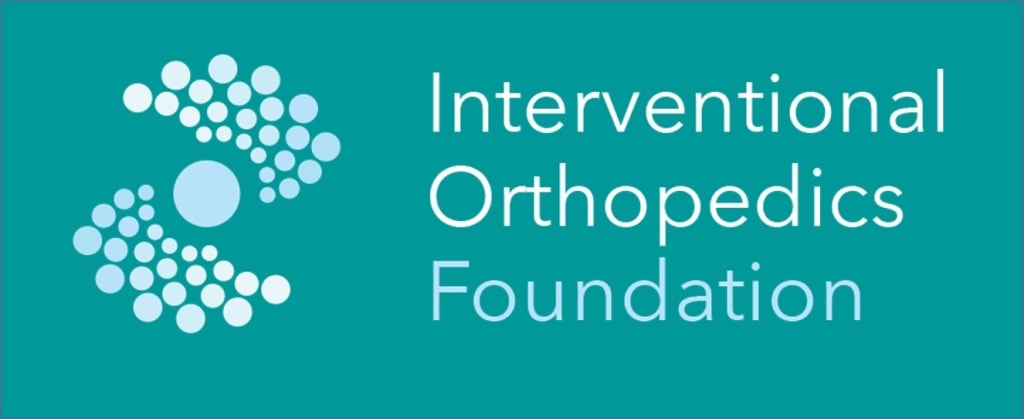My Address to The First Annual Interventional Orthopedics Conference
This week I will be crazy busy getting ready for our annual Regenexx Provider Conference, the First Annual Interventional Orthopedics Foundation (IOF) Conference, and several specialized Regenexx Provider cadaver training courses. While I will talk more about the Regenexx Network part tomorrow, I’d like to focus this Sunday on the IOF Conference by giving you a sneak peak at my opening remarks for the conference.
This is a narrative outline of what I’ll discuss at the opening of the conference, but realize that I have never been one for reading off a teleprompter, so expect me to adlib a bit. This speech is of course after the important and obligatory thank you’s and acknowledgements have been delivered:
“Why are we here today? I can think of three reasons: an opportunity, a problem to be solved, and a promise. The opportunity is caused by the mounting evidence that traditional orthopedic surgery, which has dominated musculoskeletal care for decades, is broken. The problem to be solved is the haphazard explosion of what I’ll call “Schlock Regenerative Medicine”. And finally the promise is that regenerative medicine is the game changer that will change the lives of our patients for the better.
If orthopedic surgery were a patient, based on the dismal outcomes in many large studies, it should be in the ICU on a respirator. Yet, like a patient with a serious virus in it’s incubation phase, it looks healthy enough, with only sophisticated tests being able to suggest it’s impending demise. The people sitting in this room today represent the physicians who have or want to learn the the skills to help, or reinvent, our infected host. In fact, regenerative medicine will likely do both. We’ll see failed surgical procedures begin to become successful because of adjuncts like platelet rich plasma, stem cells, growth factors, and other orthobiologics. However, a curious Pandora’s box has already been opened that will never be closed. That is, what happens when the realization hits that the same or better outcomes can be achieved by skipping the surgery and using precise injections of orthobiologics? We can look historically at what happened the last time a better mousetrap that could be deployed through a needle was invented. In the 1980s cardiovascular surgeons dominated cardiac care with cardiologists being a little more than an after thought. Then balloon angioplasty was invented and a new breed of cardiologists began to call themselves “Interventional Cardiologists”. Today, the surgeons have been relegated to an afterthought and Interventional Cardiology controls the space, able to do almost everything their surgical colleagues used to do through a a huge gaping hole in the chest, through a catheter in the groin. This is the opportunity of Interventional Orthopedics, the ability to improve patient outcomes with less invasive care and maybe in the process, fix some of the problems of modern orthopedics.
The problem to be solved is that unlike our cardiology colleagues who followed a slow and sane adoption process of interventional treatments, musculoskeletal regenerative medicine has exploded so fast that hucksterism is more the norm than the exception. Physicians who barely know how to stick a needle in a knee blind without guidance are offering Arthritis treatments alongside those for Multiple sclerosis, ALS, impotence, hair loss, and wrinkles. The field deserves 100% of the criticism it receives from academia and the research community, as it looks much more like Dr. Smith’s magic snake oil liniment than any legitimate medical pursuit. The physicians practicing in the area are woefully under trained and lack any kind of basic science background in regenerative medicine, so they are easily lead astray by the latest whiz bang sensation of the moment, even if the science behind it makes little common nor scientific sense.
The promise is many fold. First, the reason IOF exists is to educate an entire group of physicians young and old about what’s real and what’s not. As such, unlike for profit conferences in this arena, IOF has sponsored about 1/3 of the physicians sitting in the audience to be able to be here. The reason why residents and fellows don’t make up a bigger percentage of regenerative medicine conferences is practical, they don’t have the extra disposable income to travel to these events. IOF has spent tens of thousands of dollars to make sure that those young physicians make up a significant percentage of those here. Second, regenerative medicine is a promise to patients that the days of surgeries and steroid injections that don’t really work are over. If you’re here, you “get it” that this is the start of something really huge. It’s not often in life that you get to be at the start of a tidal wave that changes medicine for the better. We therefore have a promise to keep to our patients, to make sure that regenerative medicine delivers for them. Which is why IOF will be a force in orthopedic care to provide unbiased information to all physicians, enforce guidelines that protect patients, collect data that makes outcomes better, and be the fertile ground where an entire new medical specialty can take root. To replace the snake oil with real 21st century medicine based in science.”

If you have questions or comments about this blog post, please email us at [email protected]
NOTE: This blog post provides general information to help the reader better understand regenerative medicine, musculoskeletal health, and related subjects. All content provided in this blog, website, or any linked materials, including text, graphics, images, patient profiles, outcomes, and information, are not intended and should not be considered or used as a substitute for medical advice, diagnosis, or treatment. Please always consult with a professional and certified healthcare provider to discuss if a treatment is right for you.

